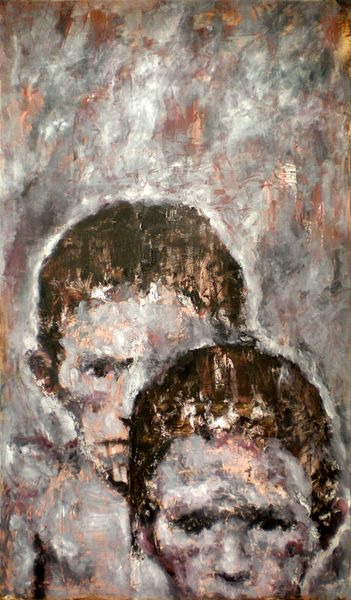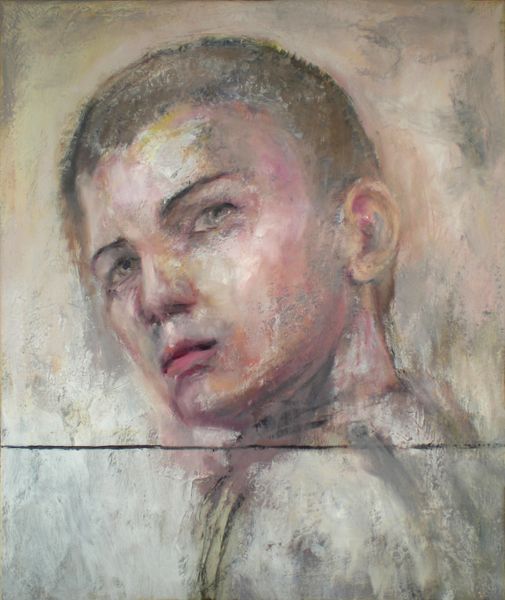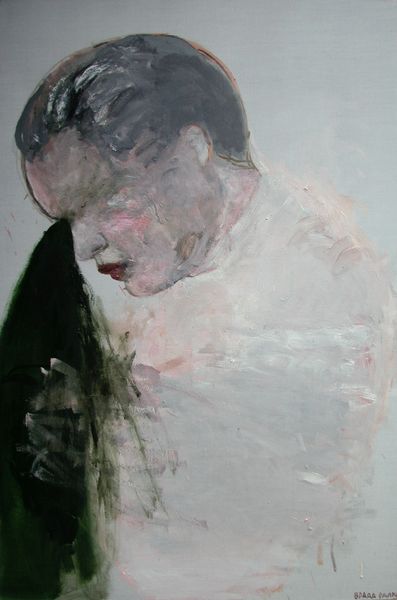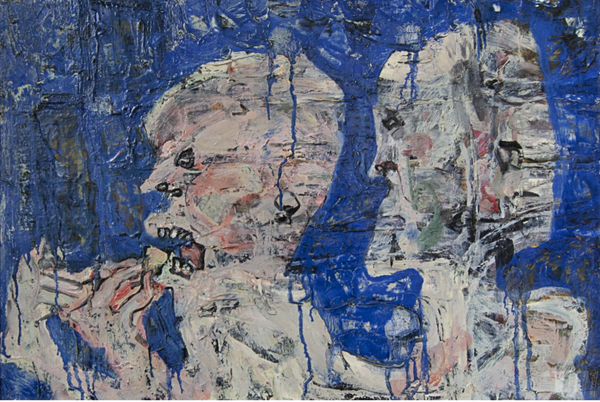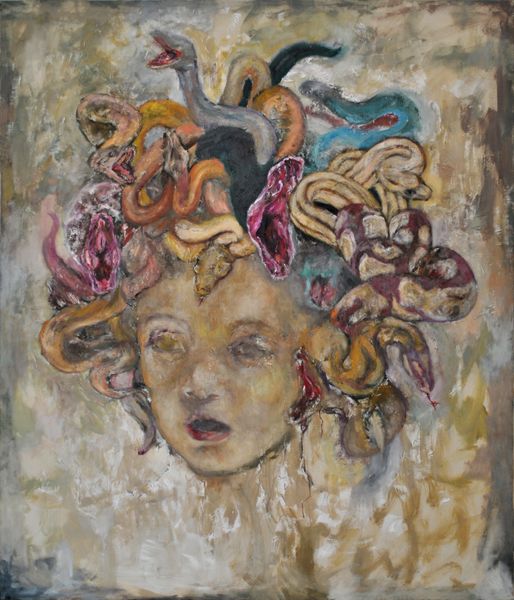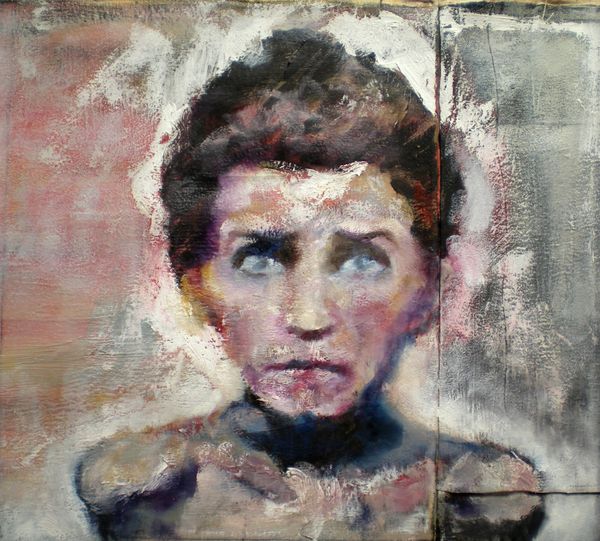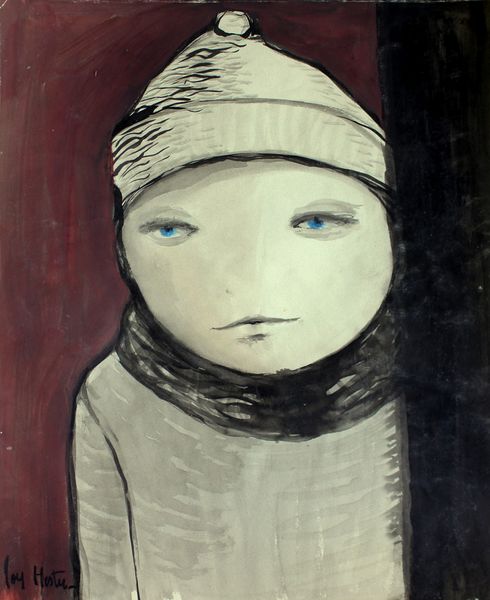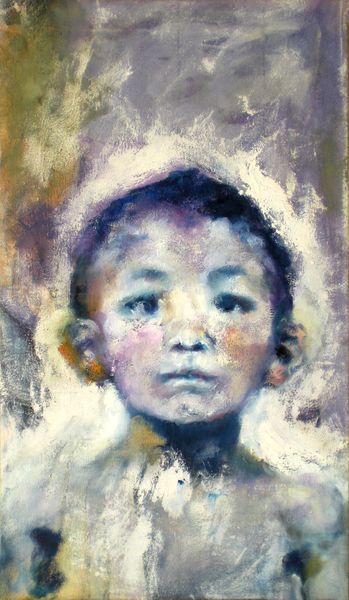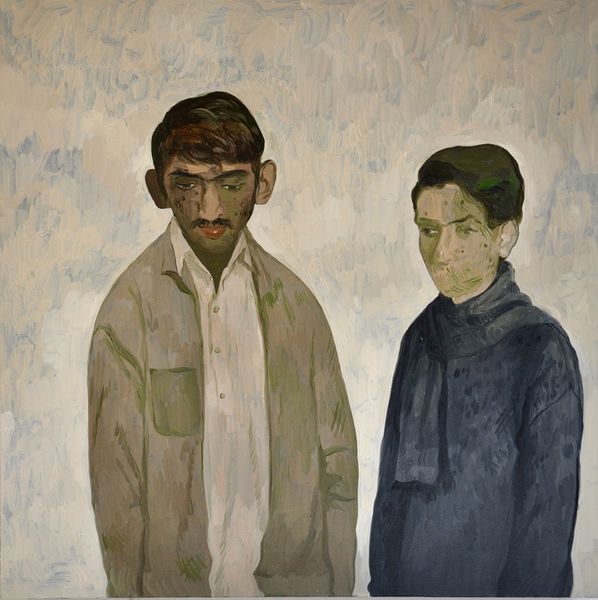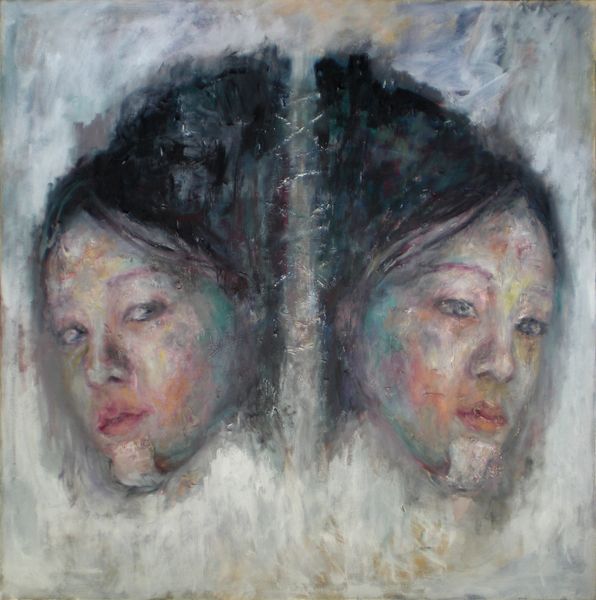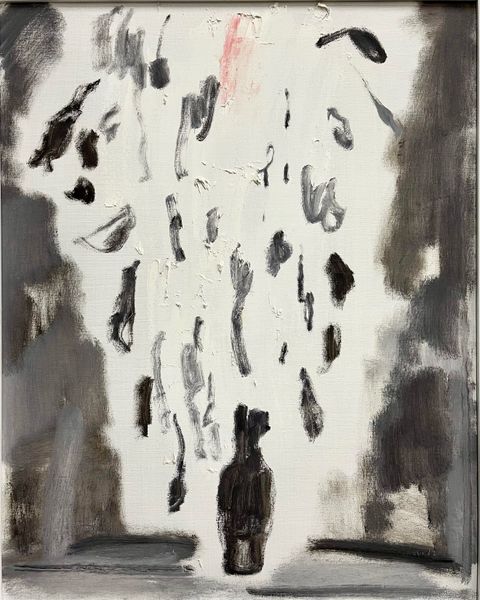
Copyright: Carmen Delaco,Fair Use
Curator: We’re standing before Carmen Delaco's “Children With no Name III,” an oil painting from 2008. What’s your immediate reaction? Editor: There’s an unsettling starkness here. The somber grays and the rough texture of the paint create a very heavy, almost mournful atmosphere. It’s far from a sentimental portrait. Curator: Exactly. Notice the recurrence of the child motif in Delaco’s work, and especially within this piece the representation echoes broader themes of loss and voicelessness in contemporary society. The obscured faces hint at erasure and forgotten histories, acting as an iconographic indictment. Editor: I see that, and formally, that obscured effect is fascinating. Look at the layering—the almost violent application of paint, which practically obliterates any fine detail. There's a deliberate tension between representation and abstraction, teetering on the edge of formlessness. Curator: The layering definitely plays into it, creating not only a sense of depth, but of time as well. Think of the historical layers of trauma a child could experience. Also, the artist's use of Neo-Expressionist techniques really adds to the raw emotionality of the composition. Editor: Definitely Neo-Expressionist in its abandonment of clear representational goals, focusing on direct expression, however uncomfortable. Note how the muted palette intensifies the feeling of unease, as if color itself has been stripped away, leaving only the brutal honesty of texture. I’d argue it forces a purely visceral response. Curator: That rawness connects to archetypal representations of suffering. These "nameless children" become universal symbols of innocence lost and vulnerable. Their ambiguous depiction actually compels the viewer to confront uncomfortable truths about humanity. Editor: It truly avoids any simple narrative, doesn't it? More of a concentrated field of feeling rendered in pigment and form, where its emotionality overwhelms you rather than any particular symbol within. It shows its hand right from the materiality up front. Curator: It invites questions about who these children might be and, more importantly, what systemic failures contribute to their anonymity. So while it’s heavy, I hope that its purpose is to also prompt introspection. Editor: Absolutely, and thank you, as its strength, as we've discussed, comes from its refusal of simple readings or sentimental conclusions. It’s a tough artwork to walk away from unchanged.
Comments
No comments
Be the first to comment and join the conversation on the ultimate creative platform.
